UPSC Daily Current Affairs: 22 August 2024 | Current Affairs & Hindu Analysis: Daily, Weekly & Monthly PDF Download
GS3/Economy
Were 8 crore New Jobs created in Three Years?
Source: The Hindu
Why in news?
Prime Minister Modi has asserted that India generated eight crore new jobs in the last three to four years, drawing on the India-KLEMS database managed by the Reserve Bank of India (RBI). The claim indicates a rise in the workforce from 56.6 crore in 2020-21 to 64.3 crore in 2023-24, representing a net increase of 7.8 crore workers. This statement is further supported by a report from the State Bank of India (SBI), which corroborated the employment data with findings from the National Sample Survey Office’s (NSSO) Annual Survey of Unincorporated Sector Enterprises (ASUSE).
Background (Context of the Article)
- PM Modi's claim is based on data from the India-KLEMS database, which shows an increase in the number of workers.
- The data shows a growth from 56.6 crore workers in 2020-21 to 64.3 crore in 2023-24.
- The SBI report supports these figures by validating them against NSSO's ASUSE data.
Methodological Concerns
- Experts express skepticism regarding the methodology behind these employment figures.
- The India-KLEMS project was initially an academic initiative, not primarily intended for employment data production.
- KLEMS refers to Capital (K), Labour (L), Energy (E), Material (M), and Services (S).
- The database aims to analyze productivity rather than directly measure employment.
- Employment figures are derived from various official sources, not collected directly by the RBI.
Population Estimates and Worker Population Ratio (WPR)
- The database calculates the number of workers by using the Worker Population Ratio (WPR) multiplied by the total population.
- With no official population figures available after 2011, the database has relied on projections from various sources.
- This reliance on projections has raised concerns about potential inaccuracies and overestimation of workforce numbers.
Shifts in Employment Structure
- According to the Periodic Labour Force Survey (PLFS), WPR in India increased from 34.7% in 2017-18 to 41.1% in 2022-23.
- This rise is largely attributed to an increase in unpaid self-employment, especially among rural women in agriculture.
- The data indicates that genuine and paid job creation may not have occurred to the extent claimed.
Comparison with ASUSE Data
- The SBI's assertion that the India-KLEMS and ASUSE figures align has faced scrutiny.
- ASUSE only considers unincorporated non-agricultural establishments and excludes certain sectors.
- The SBI report inflated total worker estimates by including data from additional sectors not covered by ASUSE.
Conclusion
- The use of India-KLEMS data, which was not designed for this purpose and employs questionable methodologies, supports a political narrative on job creation.
- The absence of accurate population data due to a delayed Census complicates the picture, leading to reliance on flawed projections.
- A more careful and accurate analysis of employment trends in India is essential moving forward.
GS2/Polity
Centre debates taking caste count during Census
Source: The Hindu
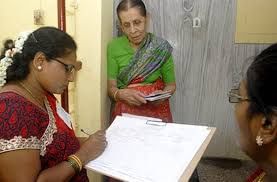
Why in News?
The Union government has not yet made a decision regarding the upcoming Census, but discussions are ongoing about the potential inclusion of caste enumeration. The push for a caste Census has postponed the process, as any inaccuracies could complicate the exercise.
About
- The Population Census provides essential statistics on human resources, demographics, cultural aspects, and economic structures at local, regional, and national levels.
- The first Census in India was conducted in 1872, with subsequent ones occurring every ten years.
- The first synchronized Census was conducted in 1881 under British rule, led by W.C. Plowden, the Census Commissioner of India.
- The responsibility for conducting the decadal Census lies with the Office of the Registrar General and Census Commissioner of India, under the Ministry of Home Affairs.
Legal/Constitutional basis of Census
- The population Census is listed in the Union List (entry 69) of the Seventh Schedule in the Indian Constitution.
- The Census is conducted under the provisions of the Census Act, 1948.
Process of census enumeration
- The Census operations in India are carried out in two phases: House-listing and Housing Census, followed by Population Enumeration.
- The Population Enumeration phase occurs six to eight months after the Housing Census, where each individual is enumerated along with personal details such as age, marital status, religion, and mother tongue.
Some features of the upcoming census
- The upcoming decadal Census will be the 16th in the series and the 8th since independence.
- Originally scheduled for 2021, the Census was postponed due to the COVID-19 outbreak in 2020.
- For the first time, data collection will occur digitally through a mobile app in the upcoming Census.
- Self-enumeration will also be introduced for the first time in this Census.
Caste census
- Caste census refers to the inclusion of caste-wise data in the Census exercise.
- The debate surrounding a caste census has grown more complex than expected, with opponents arguing it is politically motivated, while supporters view it as a chance to enhance state authority ethically.
Background
- Caste was recorded in British India Censuses from 1881 to 1931.
- Post-independence, the 1951 Census omitted caste enumeration except for Scheduled Castes (SCs) and Scheduled Tribes (STs), who continue to be counted.
- Caste data was collected during the 2011 Census, but the results were never released to the public.
- In 1961, the Government of India suggested that states conduct their own surveys for state-specific Other Backward Classes (OBC) lists, as there were no central reservations for OBCs at that time.
- While the Census is a Union subject, the Collection of Statistics Act, 2008, allows states and local bodies to gather necessary data, as seen in Karnataka (2015) and Bihar (2023).
Demand for a caste census in India
- The demand for a caste census extends beyond political reasons, focusing on supporting the world's largest caste-based affirmative action program.
- Caste identities are vital in determining reservations in educational institutions and government jobs.
- Scheduled Castes (SCs) and Scheduled Tribes (STs) have quotas based on their population percentages, while Other Backward Classes (OBCs) have a 27% reservation, informed by the BP Mandal Commission based on caste.
Need for caste Census
- The necessity for a caste census arises from outdated reliance on caste estimates from 1931, which complicates current welfare policy formulation.
- An updated caste census would provide accurate data for better policymaking.
- Previous estimates by the NSSO and UDISE indicate significant OBC representation in primary education, yet current data on caste-based benefits is insufficient.
- The Supreme Court's Indra Sawhney decision (1992) mandated regular data collection to prevent privileged castes from exploiting quota benefits.
- Supporters of the caste census, including leaders like Bihar's Nitish Kumar and Tamil Nadu's MK Stalin, argue it will enable more precise social programs and address disparities in job and education opportunities among castes.
- It would provide reliable data on educational and economic inequalities, ensuring fair distribution of opportunities.
Argument against caste census
- Critics argue that it could exacerbate social divisions.
- Documenting caste data might reinforce existing prejudices and deepen caste-based discrimination instead of alleviating it.
- Many opponents label it as an administrative challenge, citing the 2011 SECC, which identified over 46 lakh castes and sub-castes as an example of the difficulties in accurately categorizing such a diverse population.
- There are concerns about producing unreliable data that could complicate policymaking rather than clarify it.
- Opponents also fear that it would stimulate demands for increased reservations.
- Political parties might exploit caste census results to mobilize vote banks, potentially leading to greater caste-based polarization and conflict.
- Analysts suggest that focusing on a caste census could divert attention from pressing issues such as poverty, education, and healthcare, which require attention across all communities.
GS2/International Relations
PM Modi’s historic visit to Ukraine and Poland
Source: Indian Express

Why in news?
Prime Minister Narendra Modi has arrived in Warsaw for the first leg of his two-nation visit to Poland and Ukraine. After visiting Poland on August 21, he will head to Ukraine on August 23. This also marks the first-ever visit by an Indian PM to Poland in 45 years.
Significance of PM Modi’s visit to Ukraine and Poland
- India's growing focus on Central Europe in its foreign policy
- Efforts to engage more deeply with Europe
- Addressing a key gap in India's European policy
- Poland and Ukraine emerging as important long-term partners
- Indicates India's active interest in the region amid geopolitical shifts
Diversification of India’s relations in Europe
- Historically focused on relations with Europe’s big four: Russia, Germany, France, and Britain
- Recent efforts to widen outreach to include Central Europe
- Modi’s travel and diplomatic engagements highlight this shift
Weight carried by these nations
- Ukraine: Largest territory in Europe after Russia
- Poland: Largest economy in Central Europe; significant growth over the last three decades
- Ukraine's reconstruction is strategically important
India – Poland Relation in brief
- Diplomatic relations established in 1954; embassies opened in Warsaw and New Delhi
- Historical refuge provided to Polish women and children during WWII
Economic & commercial Relations
- Poland as India's largest trading partner in Central & Eastern Europe
- Total bilateral trade increased by 192% from 2013 to 2023
Investment
- Indian investments in Poland estimated over US$ 3 billion; Polish investments in India around $685 million
Sectoral Collaboration
- Collaboration in clean coal technologies and mining sectors
- Indian exports in textiles and chemicals growing significantly
Cultural Relations
- Commemorative monuments and plaques established to honor historical connections
GS3/Economy
Discussion on E-commerce Sector in India
Source: Business Standard

Why in News?
Aiming at the largest online retailer in the world - Amazon, the Union Minister of Commerce and Industry voiced concerns about the rapid expansion of the e-commerce sector in India.
What is E-commerce?
E-commerce, or electronic commerce, refers to the buying and selling of goods and services, as well as the transmission of funds or data, over an electronic network, primarily the internet.
Key Factors Promoting the Growth of E-Commerce in India
- Price Advantage: Many products available online are often cheaper than their offline counterparts, making e-commerce attractive to consumers.
- Payment Options: Initiatives like Digital India have significantly enhanced internet access, and the growth of digital wallets and Unified Payments Interface (UPI) has expanded payment choices. Cash on Delivery (COD) remains popular due to widespread cash circulation.
- Domestic Consumption: The increasing purchasing power of the Indian consumer has fueled demand, supporting the e-commerce sector's growth.
- Language Accessibility: E-commerce platforms primarily use English, which caters to India’s large English-speaking middle class, promoting growth in the industry.
Government Initiatives to Promote E-commerce in India
- Digital India: Launched in 2014, this initiative aims to enhance digital infrastructure and access.
- Make in India: Encourages domestic manufacturing and digital sales.
- Start-up India: Supports new businesses, including those in e-commerce.
- Skill India: Aims to equip the workforce with necessary skills for the digital economy.
- Innovation Fund: Provides financial support for innovative projects in the e-commerce space.
- Government e-Marketplace (GeM): An online platform launched in 2016 for public procurement, promoting transparency and efficiency.
- National Retail Policy: Identifies areas for integrated management of offline and online retail, focusing on ease of doing business and digitization.
- Open Network for Digital Commerce (ONDC): Promotes open networks for the exchange of goods and services, independent of specific platforms.
- Consumer Protection (e-commerce) Rules 2020: Mandates e-commerce companies to display country of origin and clarify product listing parameters.
- 5G Rollout: Significant investments in fiber networks for 5G are expected to enhance e-commerce capabilities.
Concerns Regarding E-Commerce Sector in India
The e-commerce sector is experiencing rapid growth, currently at an annual rate of 27%, with projections to double every three years. This expansion has generated approximately 15.8 million jobs, including 3.5 million for women, and involved around 1.76 million retail enterprises in e-commerce activities.
- Predatory Pricing: Concerns have been raised about practices where companies, particularly new entrants, set prices artificially low to undercut rivals and increase market share. The Union Minister highlighted that such practices could disrupt social stability by adversely affecting around 100 million small retailers.
- Social Disruption: The aggressive pricing strategies of major e-commerce players may threaten the livelihoods of numerous small retailers across the country.
GS3/Science and Technology
Atomic clocks- Lunar time standard
Source: Indian Express
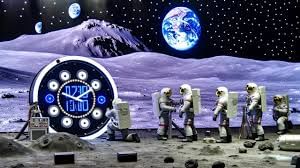
Why in News?
Recently, an international astronomical group has called for a lunar time standard to facilitate future missions, addressing time discrepancies on the Moon due to its unique gravitational effects.
About Atomic clocks
- Atomic clocks are the most accurate timekeeping devices, essential for applications that demand high precision, such as:
- GPS systems
- Telecommunications
- Scientific research
- These clocks measure time based on the resonant frequencies of atoms, particularly cesium-133.
- In atomic timekeeping, one second is defined by how long it takes for a cesium atom to vibrate 9,192,631,770 times.
- The exceptional stability and accuracy of atomic vibrations make atomic clocks the most reliable for time measurement.
How Does an Atomic Clock Work?
- Atomic clocks utilize a specific type of atom that vibrates at a highly stable frequency.
- The process starts in a microwave cavity, which is a chamber filled with cesium vapor.
- A microwave signal is introduced into this cavity, causing cesium atoms to vibrate and emit radiation at a precise frequency.
- This emitted frequency is detected and compared to a standard frequency.
- Any variations between the two frequencies are used to adjust the clock's timekeeping, ensuring ongoing precision.
Types of Atomic Clocks
- Cesium atomic clocks: The most widely used type, which defines the international time standard known as Coordinated Universal Time (UTC).
- Hydrogen maser atomic clocks: These clocks are even more precise than cesium clocks and are primarily utilized in scientific research.
Why is a Lunar Time Standard Needed?
- A lunar time standard is crucial for maintaining accurate timekeeping for lunar spacecraft and satellites.
- Such a standard would synchronize communications between:
- Satellites
- Astronauts
- Lunar bases
- Earth
- This synchronization would facilitate coordinated operations, reliable transactions, and effective management of lunar commerce.
- Due to the Moon's lower gravity, time on the Moon progresses slightly faster than on Earth.
- An Earth clock would lose approximately 7 microseconds per Earth day when viewed from the Moon, with additional periodic variations.
- This time discrepancy can lead to significant challenges in critical scenarios, such as:
- Docking spacecraft on the Moon
- Transferring data at exact times
- Maintaining reliable communication and navigation
How Earth’s Time Standard Works
- The timekeeping system on Earth is founded on Coordinated Universal Time (UTC), which is a globally recognized standard.
- UTC ensures consistency and is based on International Atomic Time (TAI), which is derived from atomic clocks worldwide.
- UTC is managed by the International Bureau of Weights and Measures located in Paris, France, and is calculated from a weighted average of over 400 atomic clocks globally.
- To determine local time, countries adjust UTC by adding or subtracting hours based on their distance from the:
- 0-degree longitude meridian, also known as the Greenwich Meridian.
- Countries located west of the Greenwich Meridian subtract from UTC, while those to the east add to it.
GS3/Environment
What is a Waterspout?
Source: Indian Express
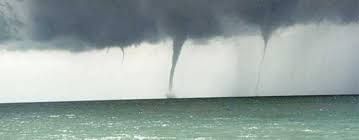
Why in News?
Recently, a luxury yacht sank off Sicily, Italy, during a violent storm, resulting in one confirmed death and six individuals missing, possibly due to a waterspout.
About Waterspouts:
- Waterspouts are notable atmospheric events defined by rotating columns of air that form over water bodies.
- These tornado-like formations generally occur over seas or large lakes, showcasing nature's powerful displays.
- They are considered weaker versions of tornadoes, typically lasting between 5 to 10 minutes.
- The average diameter of a waterspout is approximately 165 feet (50 meters).
- Wind speeds associated with waterspouts can reach up to 100 km/h (60 mph).
Formation of Waterspouts:
- The formation process of waterspouts differs based on their type.
- Fair-weather waterspouts arise when cool air moves over open water, pulling water upwards and creating these phenomena.
- Tornadic waterspouts are more likely to develop during thunderstorms. Some may initiate as tornadoes on land before moving over water.
- Waterspouts progress through a distinct five-stage process:
- Dark spot: A light-colored disk appears on the water’s surface, encircled by a darker area with blurred edges.
- Spiral pattern: Light and dark bands spiral outward from the dark spot.
- Spray ring: The dark spot generates a swirling mass of sea spray, reminiscent of a hurricane's eye.
- Mature vortex: The spray ring evolves into a spinning funnel stretching from the water's surface to the clouds above.
- Decay: As warm air disrupts the vortex, the waterspout weakens and eventually dissipates.
- The critical factor in waterspout formation is the presence of cold air cycling over warm water.
- While they are most prevalent in tropical and subtropical areas, waterspouts can also occur in various global regions, including Europe, the Middle East, and even Antarctica.
Types of Waterspouts:
- Tornadic Waterspouts:
- These are essentially tornadoes that occur over water.
- They are associated with severe thunderstorms.
- Can bring dangerous conditions such as high winds, large hail, and frequent lightning.
- Fair Weather Waterspouts:
- Form under calmer atmospheric conditions, typically at the base of developing cumulus clouds.
- Generally not related to thunderstorms.
- Develop from the water's surface upward and usually move very little due to light wind conditions.
- Snowspouts:
- These are exceptionally rare waterspouts that develop beneath a snow squall.
- Often referred to as snow devils, they are typically weak but can occasionally reach the intensity of an EF1 tornado.
GS3/Environment
Orangutans
Source: Indian Express
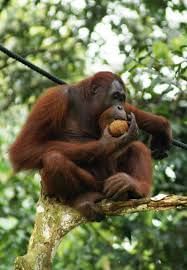
Why in News?
Recently, Malaysia has initiated "Orangutan Diplomacy" to address sustainability concerns related to palm oil-linked deforestation affecting orangutans, in response to backlash.
About Orangutans:
- Orangutans are notable for their striking red fur and are the largest tree-dwelling mammals.
- They are primarily arboreal, spending over 90% of their awake hours in trees.
- Their high intelligence is highlighted by their genetic similarity to humans, sharing about 4% of their DNA, which emphasizes the importance of their conservation.
Distribution:
- Orangutans are found on the Indonesian island of Sumatra and in both the Malaysian and Indonesian regions of Borneo.
- Their habitat ranges from lowland peat swamp forests to mountainous forests, reaching elevations of nearly 6 kilometers above sea level.
Species:
- There are three recognized species of orangutans: Bornean, Sumatran, and Tapanuli.
Characteristics:
- Size: Adult males can be approximately twice the size of females, with heights reaching up to 3 meters and weights up to 130 kg in the wild.
- Appearance: They are characterized by long, sparse orange or reddish hair, with arms that are notably longer than their legs. Their hands and feet are adapted for grasping, featuring long, curved fingers and toes. Mature males develop distinctive cheek pads, a unique trait among primates.
- Lifespan: In the wild, orangutans can live for up to 50 years.
- Diet: As primarily daytime feeders, their diet mainly includes fruits and leaves, particularly lychees and figs. They also consume nuts, bark, insects, and occasionally bird eggs.
- Social structure: Orangutans exhibit semi-solitary behavior, being the most solitary of the great apes. However, they demonstrate social tolerance during times of abundant fruit, often gathering in groups known as parties.
Conservation Status:
- All three species of orangutans are classified as 'Critically Endangered' on the IUCN Red List, highlighting the urgent need for conservation efforts.
GS3/Science and Technology
Antihyper Hydrogen-4
Source: Frontiers
Why in News?
The recently discovered antiparticle known as antihyper hydrogen-4 may provide insights into the asymmetry between matter and antimatter, which could help scientists understand the origins of our universe.
About:
- Antihyper hydrogen-4 consists of an antiproton, two antineutrons, and one antihyperon, which is a baryon containing a strange quark.
- Researchers identified evidence of this antimatter in the data from 6 billion particle collisions at the Relativistic Heavy Ion Collider (RHIC) located at Brookhaven National Laboratory in New York.
- Notable findings include:
- Both hyperhydrogen-4 and its antimatter counterpart, antihyper hydrogen-4, appear to vanish rapidly after their creation.
- No significant differences were observed in their lifetimes.
- Future research will focus on comparing the masses of the antiparticles to their corresponding particles, which may provide insights into how our matter-dominated universe originated.
Antimatter
- Antimatter shares many characteristics with regular matter, such as:
- Similar mass and lifetime before decay.
- Same interactions, with the primary distinction being opposite electric charges.
What is an Antiparticle?
- An antiparticle is a subatomic particle that matches the mass of another particle but has opposite values for some of its properties.
- For example, the antiparticle of an electron is called a positron.
Key Takeaways
- The discovery of antihyper hydrogen-4 is significant for understanding the fundamental nature of the universe.
- Ongoing research aims to explore the differences between matter and antimatter.
- Understanding antimatter can provide clues about the early universe and why it is predominantly composed of matter.
GS1/Indian Society
Dhangar Community
Source: DTE
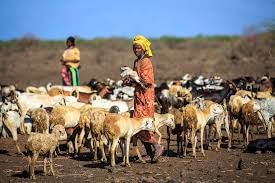
Why in News?
A large group of Dhangars recently marched to the office of the sub divisional officer in Khamgaon of Maharashtra’s Buldhana district, demanding a “grazing corridor” for their sheep and goats.
About Dhangar Community:
- The Dhangars are a community of shepherds found in multiple states including Gujarat, Karnataka, Andhra Pradesh, and Maharashtra.
- They are listed as part of the Vimukta Jati and Nomadic Tribes (VJNT) in Maharashtra.
- This community tends to lead a largely isolated lifestyle, primarily residing in forests, hills, and mountainous regions.
Households and Population:
- Dhangar households are generally small, closely-knit family units where familial bonds are essential.
- The estimated population of the Dhangar community is around 1 crore, which constitutes approximately 9% of Maharashtra's total population.
Clusters and Sub-Castes:
- Within the Dhangar tribe, there are about 20 recognized sub-castes and clusters, each characterized by unique customs and traditions.
Occupation:
- The Dhangars primarily rely on herding as their main source of livelihood.
- They engage in both nomadic pastoralism and semi-nomadic agrarian lifestyles, particularly in rural areas.
Seasonal Migration:
- Following the conclusion of the bajra harvesting season in October, the Dhangar community embarks on their annual migration to seek greener pastures for their livestock.
Culture:
- The Dhangars observe various customs and rituals during their migratory journey, including the worship of their ancestors.
- A notable aspect of their culture is the tradition of singing songs, particularly at night, which serves multiple cultural purposes.
- These songs, known as sumbaran, represent an important oral tradition among the Dhangars.
|
63 videos|5408 docs|1146 tests
|
FAQs on UPSC Daily Current Affairs: 22 August 2024 - Current Affairs & Hindu Analysis: Daily, Weekly & Monthly
| 1. How many new jobs were reportedly created in India in three years? |  |
| 2. What is the current discussion regarding taking caste count during the Census in India? |  |
| 3. What were the key highlights of PM Modi's visit to Ukraine and Poland? |  |
| 4. What are some key factors promoting the growth of E-commerce in India? |  |
| 5. What are some concerns regarding the E-commerce sector in India? |  |





















